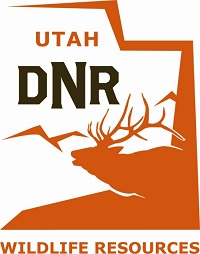To understand the current brouhaha surrounding Utah’s pending crow hunt, it helps to know about the North American Model of Wildlife Conservation. The model was referred to several times at the Utah’s Wildlife Board public hearing, where the board voted 3-2 in favor of the crow hunt.
It derives from an 1842 Supreme Court case which addressed hunting, wildlife, and set in motion the placement of wildlife into public trust.
In a nutshell, that’s how we’ve gone from Open Season on Everything (circa early 1800’s) to protected species, endangered species, and hunted species with seasons, bag limits, etc. etc.
 Sportsmen have, for over a century, had a seat at the wildlife management table. They didn’t get it for free. In Utah, the hook and bullet contingent supports 94 percent of the state’s wildlife department budget with its licenses, taxes on ammunition, duck stamps, and the like. Read more here.
Sportsmen have, for over a century, had a seat at the wildlife management table. They didn’t get it for free. In Utah, the hook and bullet contingent supports 94 percent of the state’s wildlife department budget with its licenses, taxes on ammunition, duck stamps, and the like. Read more here.
As recently as 25 years ago, this sportsmen-government arrangement jibed well with the population. Back then, “every pickup had a shotgun in its rack and every kid had a big rodeo belt buckle” recalled Bill Fenimore, a Wildlife Board member and an award-winning birder.
In 2014, however, scads of Utahns aim only with a camera or pair of binoculars. Many of them showed up at the public hearing.
Blair Stringham, Migratory Game Bird Coordinator for the Division of Wildlife Resources, said the crow hunt idea originated internally and was sent out to the Regional Advisory Councils for comment sessions.
It was approved by four of the five RACs.
But at the state hearing, more wildlife watchers than hunters showed up. This makes sense since, according to the most recent US Fish & Wildlife survey on fishing, hunting, and wildlife-associated recreation (2011), that population now outnumbers the hunters and anglers combined. Of the 1.2 million Utahns getting outside, just 15 percent of them are hunters. Two-thirds are wildlife watchers.
So why was the crow hunt approved?
As derived from the North American Model of Wildlife Conservation, billions are funneled from sportsmen and women to state and federal wildlife agencies. For generations, these folks were pretty much the only ones tromping through woods, wading through streams and attending hearings.
Only recently have non-consumptive parties asked to be part of the decision-making dance.
For the first time in state history and in response to public outcry, the Wildlife Board has scheduled a public hearing after their vote to institute the crow hunt. It’s a shining example of the shifting dynamics of wildlife interests and how non-consumptive parties are asking to be part of the process.
But given their lack of contributing dollars, how can wildlife watchers obtain a greater stakeholder status?
- Charge a birdwatching season pass?
- Charge hikers an access pass?
- Tax binoculars, cameras and water bottles?
All absurd, of course.
Incorporating this growing population is “one of our biggest challenges,” said Stringham, who said many different options, including an access license, have been considered. (Generating funds through dedicated vehicle license plates has had limited success here.)
The model, for so long a pillar of what worked for wildlife, is coming under strain in Utah and elsewhere.
“To be a good conservationist, you don’t have to shoot things,” said Fenimore, “Now we have a lot of people interested in wildlife but without ranching backgrounds. The department is struggling to answer the question of how to ask that girl out for a date.”
To be sure, especially if she’s picking up the tab.

This is a terrific article! It presents excellent, little known, points and facts!
Thank you so much!
Pingback: Crow Hunt Quandary, Part One | Coalition for American Wildbirds
Just curious why you think a tax on outdoor gear commonly used the non-consumptive demographic is absurd? That is how the majority of hunting and fishing dollars for state wildlife agencies is generated. The industry paying the excise tax (firearms and ammunition primarily) supported the Pittman-Robertson Act, and was followed by similar legislation to manage and preserve our waterways and fisheries (Dingell–Johnson Act). Why not have a excise tax to support management of non-game species not supported by PR and DJ monies? Personally I would be happy to support a tax that would allow state wildlife agencies to hire more than one or two non-game biologists.
Thanks for the comment! The folks I interviewed told me it was a struggle to identify something to tax. I agree with the notion, but folks just buy one pair of binocs in their lifetime. What exactly gets taxed? Officials told me they hadn’t figured that out.
Thanks for your comment, Dave! I DO think that taxation of non-consumptive parties is a great idea. But those I interviewed felt that it was difficult to find a commodity to tax. Binoculars? Cameras? Hiking boots? Identifying what to tax is harder than nailing folks for bullet purchases. Sell a “wilderness access pass” of sorts? My hope is that non-consumptive parties realize they cannot have a seat at the table without committing funds. Interviewees clearly haven’t determined how that can happen.